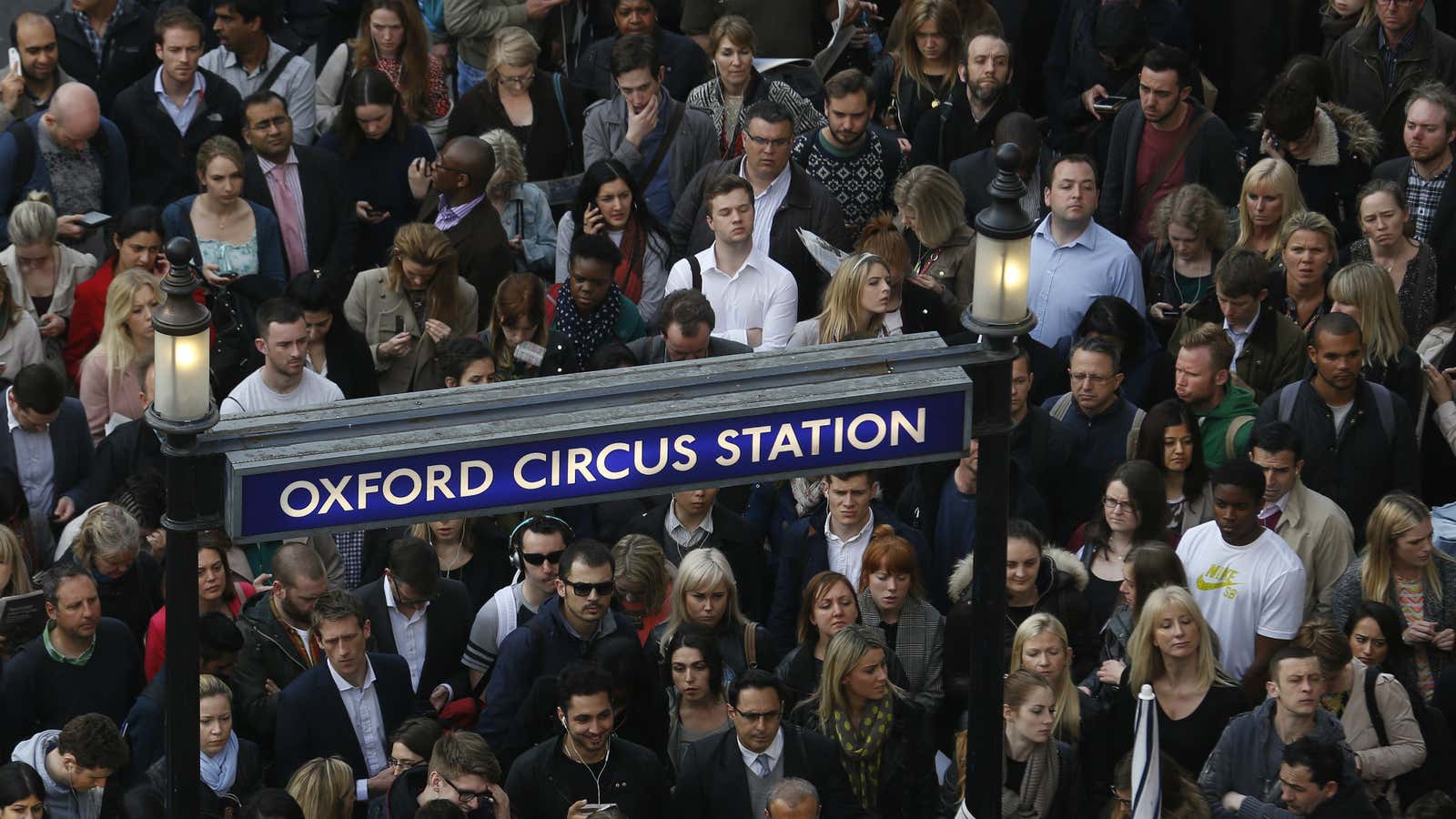Even more than usual, there is an air of weariness and resentment on the streets of London—and beneath them.
In a few hours time, the trains on the Tube will grind to a halt in the worst strike to ever hit the London Underground, shutting down the entire network for 36 hours. Some 20,000 workers from four major unions are walking out to protest low pay—in particular the raises, bonuses, and other conditions tied to the new 24-hour service that will launch in September.
Disruptions due to industrial action are nothing new for London’s long-suffering commuters, but most involve a single union or are limited to support staff, with skeleton services operating despite the work stoppage. Last-minute deals to avert strikes are also common, such as the compromise made on ticket-office closures just ahead of a planned 48-hour strike last year. The previous strike to shut down the entire network was in 2002.
London Undergound’s latest offer will not ensure “a proper work/life balance for the drivers who are delivering [the 24-hour] service,” according to one of the unions involved. But the ”pig-headed” unions won’t get a better deal, London mayor Boris Johnson said, even if they strike “until they are blue in the face.”
Extra buses, riverboats, and cycles for hire will be made available during the strike, and certain overground train lines that ring the city will continue to run. And there’s always walking—this handy map shows the time it takes to amble between stations on the network. And this droll newsreel from 1962 makes surviving a strike look almost fun:
Some 4 million passengers take the Tube every day. A quarter of capital’s workers use the network for some part of their daily commute, which in total averages out to around an hour. London’s Tube is one of the longest urban metro networks in the world, and also one of the slowest. According to one think tank, Tube strikes cost London’s economy around £10 million ($15 million) per day.
Commuters may not miss packing into a boiling Tube car during the summer, provided they can stay at home or enjoy a brisk walk or cycle ride to work. But if you must brave what promises to be hellish journeys tonight and tomorrow, you can pass the time exploring some of these numbers: the starting salary for a Tube driver is around £50,000 ($77,000), and benefits include more than 40 days of annual leave.
